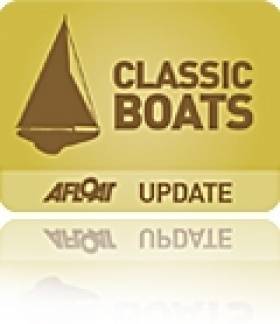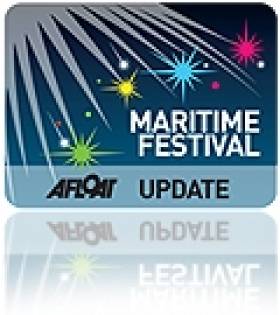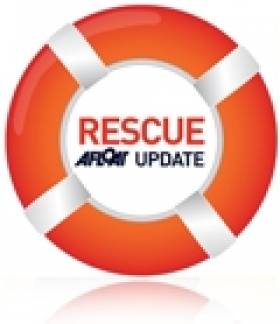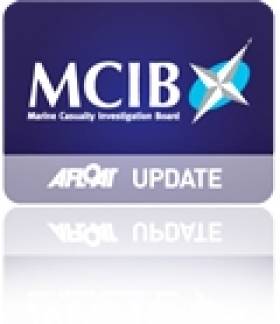Displaying items by tag: Currach
#historicboats – Boat-building organisations from France, Spain and Belgium and boating enthusiasts from across Ireland will attend an EU backed workshop conference as part of a three day visit to Cork Harbour next week.
The host organisation Meitheal Mara, based at Crosses Green in the heart of Cork City, is a community boatyard that, through its training programmes, utilises traditional boatbuilding, wood working and rowing skills to promote participant's social and personal development.
The EU Boat project is a three year learning partnership connecting Meitheal Mara with similar organisations from across Europe to share good practice, discuss challenges and devise solutions.
In addition to connecting community boat-builders, the project will also provide an opportunity for public representatives to come together to discuss their strategies for developing recreational water activities, preserving maritime heritage and promoting harbours and waterways for tourism. This week will see representatives from Cork City Council, Port of Cork and Failte Ireland come together with their European counterparts who are also travelling to Cork for the event.
The European visitors will also get the chance to try their hand at rowing a traditional Irish currach on the river Lee, visit the Port of Cork and tour the bonded warehouses on Custom House Quay.
An Tostál Fest Rescheduled For End of May
#AnTostal - Galway's An Tostál maritime festival will take place on 26 May after strong winds forced the postponement of the originally scheduled date last Sunday, according to the Galway Independent.
Cian O’Lorcáin of the organisers said the decision to delay the event was made "for the benefit of water safety. We were really thinking of the crews on the water because, with the winds, it could have proved hazardous...
"Safety is the number one thing for us so when that couldn't be guaranteed, we decided to postpone."
As previously reported on Afloat.ie, the festival - reactivated in 2011 after a 50-year gap - celebrates Galway's maritime traditions with currach racing along the Salthill promenade. This year's event is also set to feature a Galway Hooker parade of sail.
#isora – The recent ISORA race from Dun Laoghaire to Holyhead provided a novel development for one of the lesser known sailing clubs based on the Dun Laoghaire waterfront, Sailing in Dublin Club. The club entered their Sigma 33 'Obsession' and the skipper, Hungarian born, Attila Védő and the four crew, all relatively new to sailing, were happy with their placing at 14th position in what was their first competitive Offshore race.
Amongst the crew on Obsession was artist Claidhbh O Ghibne from Newgrange Currachs who joined SID to improve his seaman skills and, in particular, his knowledge of maritime navigation. Claidhbh is in the process of recreating a 7 bench, (36 ft) currach made from wicker and leather, a craft that would have been in existence around the 3,500 BC or the period when Newgrange was being built.
Claidhbh's eventual aim is to retrace the journey thought to be made by early settlers across the Atlantic from Spain to Ireland but first he has to build up his sailing skills – and that is where club sailing has met his need. Sailing in Dublin (SID) Club was founded in the 80's by sailors dwelling in the capital who had completed summer sailing courses at the Les Glenans Sailing School in the wilds of the Western seafront.
The basic founding objective of the club remains to offer regular sailing for a low cost in a club environment, all the benefits of club sailing such as skill development, racing and cruising with little of the difficulties associated with boat ownership such as maintenance cost and finding crew.
In 2011, on completing yacht sailing courses with Sailing West, Claidhbh found he still wasn't confident about determining the wind direction. He was advised to take up dinghy sailing to get a better feel for the wind and since he wasn't at sufficient standard to crew for a racing dinghy and wanted to build up his skills with a safety boat close at hand, he joined SID dinghy sessions for regular Dublin Bay sailing.
In the meantime, back in his studio and workshop, the artist and boatbuilder was continuing to produce different prototypes of seagoing currachs and also writing a book on the Boyne currachs, the last remaining wicker craft. The book 'The Boyne Currach: from Beneath the shadows of Newgrange' was published last year and provides the fascinating story of Ireland's smallest currach with prehistoric origins.The book also gives an account of the methods used by Claidhbh to recreate the 7 bench currach of the Dal Riada, an ocean-going craft with the capabilities to withstand the wrath of the Atlantic.
While the craft is near completion, financial constraints have meant that the maiden test voyages have been put on hold for the moment and Claidhbh has been using the time to brush upon his navigation skills on board SID's slightly more modern Sigma 33. While the boats taking part in the ISORA race series may seem a long way from hazel and cowhind boats, the opportunity to practise 'course made good' will be imperative for the arduous journey envisaged by the Newgrange Currach project from the western Atlantic coast of Europe to the Boyne Valley.
Body Found in Search for Missing Currach Fisherman in Galway
#SEARCH AND RESCUE - A body was recovered yesterday during the search for a 43-year-old fisherman missing off the Galway coast, as RTÉ News reports.
The body was discovered near the shoreline of St Macdara’s island off Carna, some distance from the empty currach found early yesterday morning at Inis Mór in the Aran Islands to the south.
The missing man, named locally as Gerry Folan or Gearoid O'Cualáin, was last seen rowing a currach from the Mace Head area around 5pm on Monday evening.
As previously reported on Afloat.ie, a major air and sea search and rescue operation was launched, assisted by Irish Coast Guard helicopters and the Air Corps Casa patrol craft.
RTÉ News has more on the story HERE.
Major Search Under Way for Missing Fisherman Off Galway Coast
#SEARCH AND RESCUE - The Irish Times reports of a major air and sea search and rescue operation for a 43-year-old fisherman missing off the Galway coast.
Irish Coast Guard helicopters based at Sligo and Shannon joined the overight search for the man, who was last seen rowing a currach from the Mace Head area around 5pm yesterday.
It is understood that a currach was found in the area this morning.
The search resumed at first light, with the Air Corps Casa patrol craft searching the area, and coastguard and lifeboat crews set to rejoin the operation.
New Year Currachs to be Launched on the Liffey
#CURRACH – Two traditional Irish currachs are being built on the banks of the river Liffey and will be afloat on the Irish sea in the first week of the new year. The special project undertaken by East Wall Sports Club aims to highlight the ancient Irish craft of boat building.
The launch at the Club on January 7th follows a month-long currach workshop where a team have been hand-building the boats under the careful guidance of artist and boat-builder, Mark Redden, who learnt the craft from Jackie Mons and Cork currach builder Padraig O Duinnin.
Mark told 98fm radio the currach represents more than a simple water craft: “It stands for the quality of ancient design, a legacy left to us by our forbearers and a resourcefulness applicable to today’s life. We’re drawing on all of this to build two Connemara curachs by the 7th of January!”
It is hoped these new additions in Dublin’s currach fleet will produce crews that will compete in the regattas of the west coast. Des Moriarty one of the original team and photographer for the project continued “the launch will mark 2012 as the year of the currach and the team and club welcome everyone with an interest to come on the 7th, see them launch into the Irish sea hear more about the build and project from Mark and off course enjoy some great food and music!”
More on this story from 98fm here and Dublin People here. The East Wall Sports Club facebook page is here
Crowds Come Out for An Tóstal Revival
Currach teams from around Ireland came together in Galway Bay last weekend for the revival of the An Tóstal Fesival, the Irish Times reports.
Up to 10,000 spectators are believed to have watched the nine Galway hookers brave the winds over two days of sailing in the event, the first in almost 50 years.
Members of the winning currach team from 1955 An Tóstal were also on hand for the opening ceremony.
The Irish Times has more on the story HERE.
Currach Man Died after Falling Overboard - Report
Men Drowned When Currach Capsized – Report
The report surrounding a fatal incident in a fibreglass Currach at Claddaghduff was published this afternoon by the Marine Casualty Investigation Board and is now available to download below. The report found that on the morning of 21st April 2009, whilst attending to fishing pots off Aughris Point, Claddaghduff, Co. Galway, two men, Mr. Fechin Mulkerrins and Mr. Anthony Coohill got into difficulties. Their currach capsized and as a result both men drowned. Neither man was wearing a Personal Flotation Device/Approved Life Jacket.The report found that the most significant factor in establishing the cause of the incident is the fact that when the vessel was found, a line of pots were tied off to the thwart (seat) between pots number 4 and 5. This indicates that of the string of 10 pots, (each pot weighing approximately 10 kg when dry and empty), 4 were onboard and the remaining 6 were hanging over the side and along the seabed in an approximate depth of 8 to 10 metres, the reprot concluded. This would at best restrict the vessel's vertical motion in a seaway and at worst snag the seabed thus compromising the stability/survivability of the vessel. Eventually the rolling accelerations would result in the vessel capsizing, the report said.


























